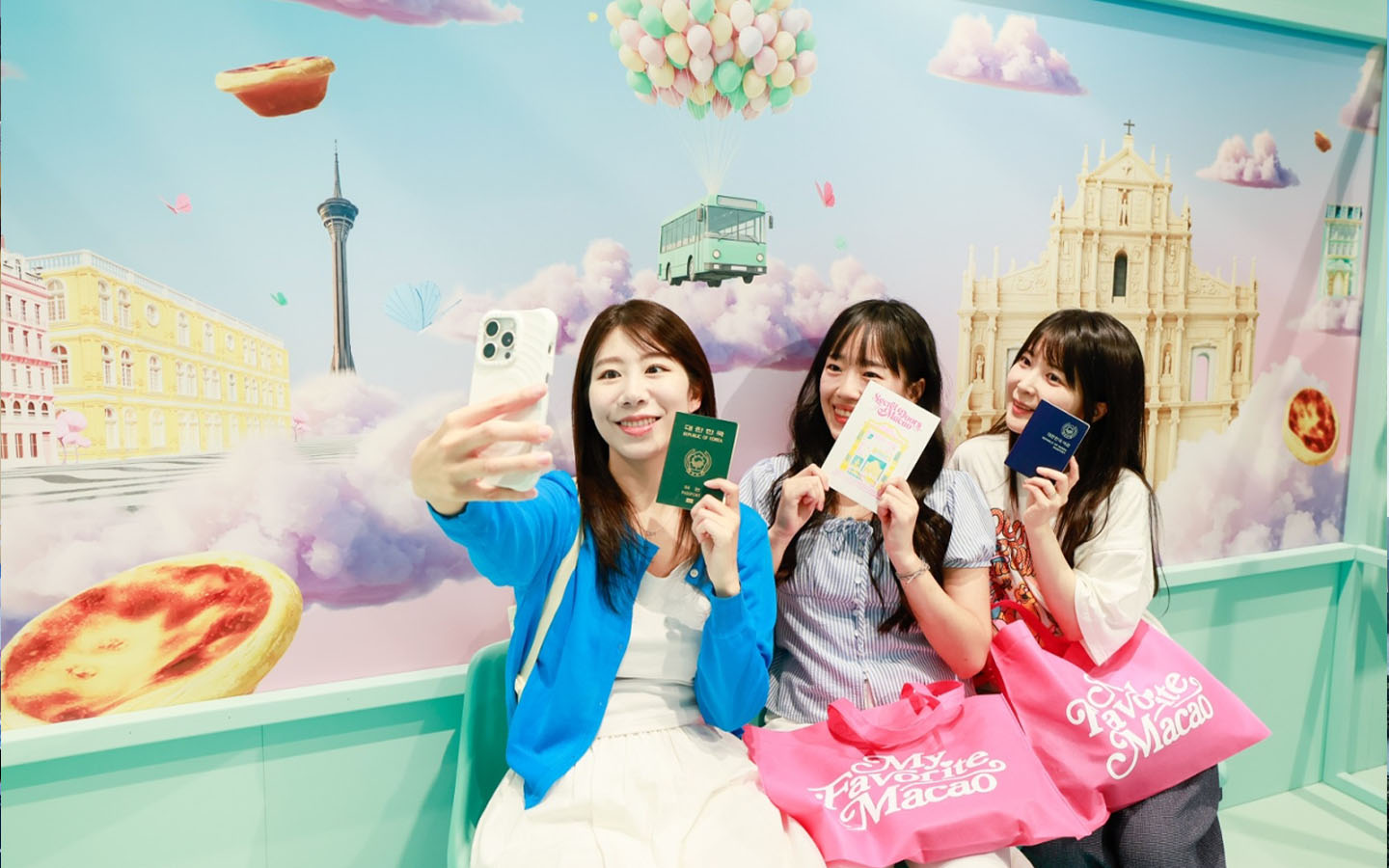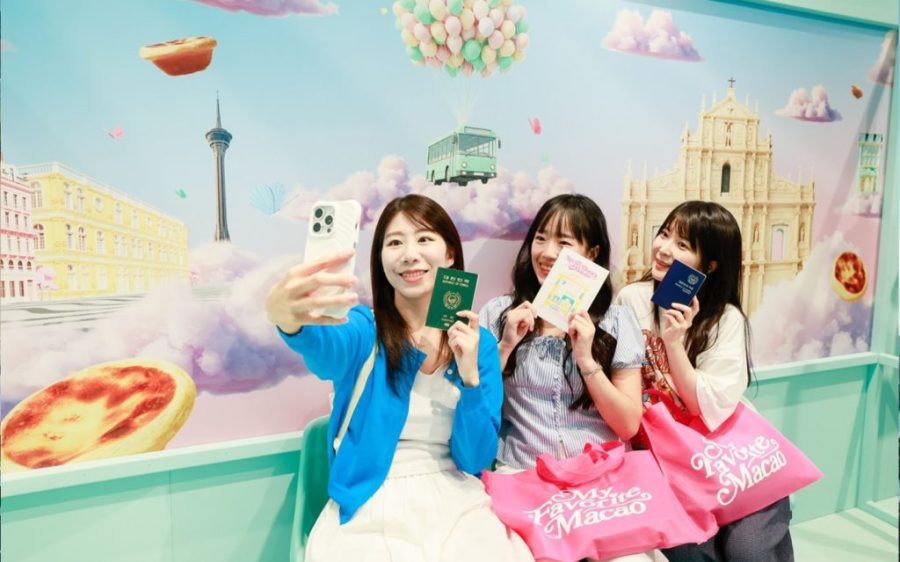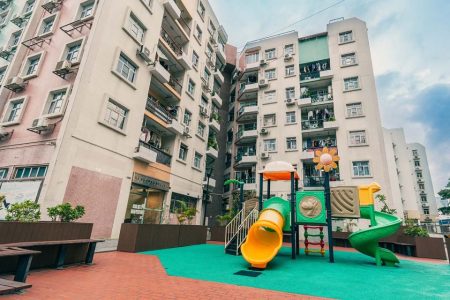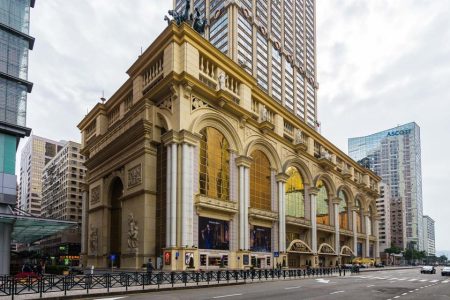Macao is fast becoming the destination of choice for many South Koreans travellers. According to data from the Macao Government Tourism Office (MGTO), South Korea is currently the SAR’s single largest source of international tourists, registering 251,235 visitor arrivals in the first five months of this year – up 25 percent year-on-year.
Even when placed alongside domestic tourism juggernauts such as mainland China, Hong Kong and Taiwan, South Korea still manages to earn a respectable fourth place in Macao’s list of source markets, with a 1.5 percent market share.
While recent arrival numbers have yet to match the pre-pandemic highs of more than 800,000 visitors per year, the Macao government intends to return to these figures within the next two years, with the MGTO setting an initial target of 500,000 South Korean travellers this year.
[See more: Macao aims to attract half a million South Korean visitors this year]
Eager to tap into the vast potential of the South Korean market, the MGTO, as well as local casino operators have already been actively implementing a variety of initiatives ranging from the hosting of promotional events to the introduction of brand new attractions.
As Macao embarks on this concerted effort to expand the South Korean market, understanding the behaviour and preferences of this group of tourists will be key to achieving success. Jaeyeon Choe, a tourism and events lecturer who previously worked at the Macao Institute for Tourism Studies (now Macao University of Tourism), but is now based at Glasgow Caledonian University, spoke to Macao News about the SAR and the South Korean market
Why do South Koreans choose to visit Macao?
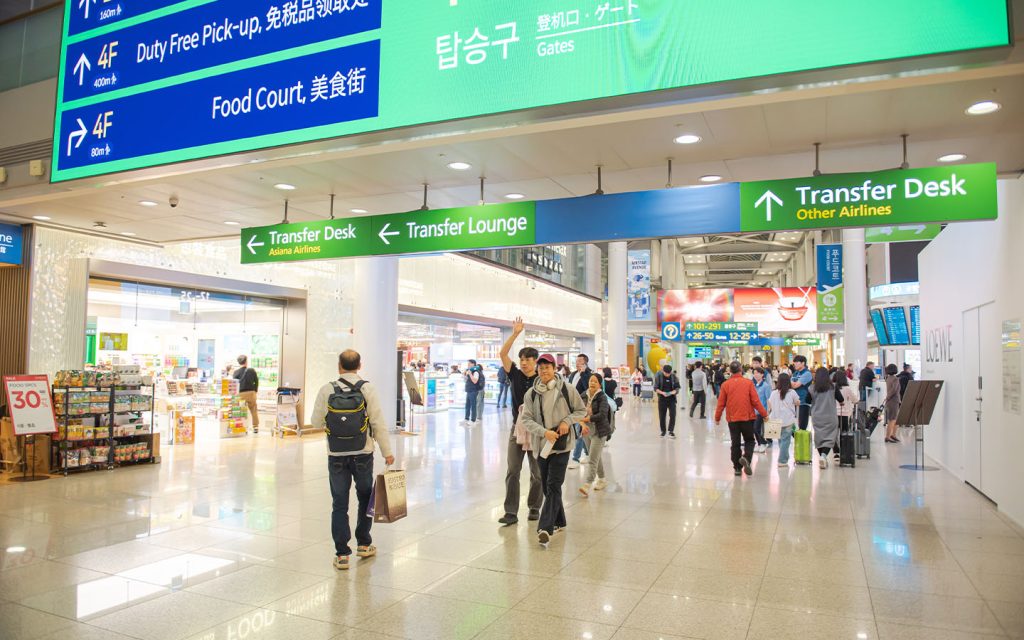
According to Choe, Macao possesses a number of draw cards that attract South Korean visitors, one of which is the Chinese city’s unique European heritage – a holdover from its more than 400 years under Portuguese administration.
“Koreans choose to go to Macao to feel like they’re in Europe and to take photos with European background, with the church and other heritage buildings,” the tourism expert says, adding that she believes this is one of the “biggest attractions for South Koreans to go to Macao compared to Hong Kong or China and other countries.”
While it is possible for South Korean visitors to fly to Europe for such a cultural experience, Macao has the added advantage of being less than four hours from South Korea by direct flight. For many South Koreans, this proximity is an important consideration due to the sparse number of paid leave days that they take each year, which Choe says currently averages to only eight days.
Legally, South Koreans are entitled to between 15 to 25 days of paid leave, depending on their length of service. However, as pointed out in a 2023 OECD report, the country’s business culture is one that is “characterised by long working hours and a reluctance by many workers to fully use leave entitlements.” As a result, long-haul flights of roughly 13 hours to Europe are simply too impractical and time-consuming for the average South Korean.
[See more: The MGTO targets South Korea’s Millennial and Gen Z travellers]
Another major reason for the growing number of South Korean arrivals relates to Macao’s rich food culture, which received official recognition when the territory was designated a Creative City of Gastronomy in 2017.
“Koreans are, generally speaking, foodies,” says Choe. She highlights that Macao’s gastronomic offerings, which include Portuguese, Macanese, Chinese and Cantonese cuisine, serve as a key motivator for Koreans who are keen to “try all these different kinds of food experiences.”
Food, however, is only one part of the equation, as the tourism expert mentions that the “European feel of a restaurant” and the authenticity of the establishment “support the experience.”
Macao attracts South Korean visitors with star power
Content creators, social media influencers, celebrities and TV programmes have also played a role in luring South Korean visitors to Macao by disseminating information about food and travel in the city.
Choe singles out YouTube as the “most important” promotional channel. One case in point is a recent Macao vlog uploaded by the popular Korean beauty YouTuber, Risabae, which has already managed to rack up close to 80,000 views in just two weeks. Some users commented that they were keen to visit Macao after watching the video.
[See more: Macao eyes new flights to South Korea and Vietnam as passenger numbers climb]
The importance of star power and social media hasn’t been lost on the Macao authorities, as illustrated by last year’s Experience Macao Limited Edition promotional campaign. Under this banner, the MGTO collaborated with Korean influencers and also produced a music video that featured K-pop girl band (G)I-DLE member MIYEON exploring Macao.
More recently, the tourism office worked on promotional material with Korean actor and singer, Im Si-wan, who is best known on the world stage for his role as Player 333 in Squid Game season 2 and 3.
Which types of South Korean tourists are choosing to visit Macao?

As Macao welcomes more Korean tourists, there are three key demographics that it should pay attention to. According to Choe, one of these major markets include young unmarried professionals in their thirties “who make a decent salary.” Instead of starting families, these singletons prefer to “spend money on travel, food and their own pleasure,” says the tourism expert.
Young female solo travellers in their thirties, alongside those who travel with their mothers, represent another major category of South Korean tourists entering Macao. Of these “young, professional females,” Choe says they “like to treat themselves for the weekend” by visiting Macao, which they consider to be a destination that is “very convenient.” The travel expert also notes that “they all think Macao is so safe. They can walk around at 2 am and nothing will happen.”
[See more: No more noodles for Korean Air]
The third market is South Koreans in their forties who have young children. Choe notes that the integrated resorts are an ideal family destination for them, as the “hotel facilities are really good.”
Already efforts are being made to develop these markets, as illustrated by the MGTO’s recent Experience Macao Roadshow in Seoul, a four-day promotional event launched on 30 May, which was aimed at Millennial and Gen Z tourists.
Macao’s casino operators are taking similar steps, with Melco pointing out in a Korea JoongAng Daily report that it would introduce programs and attractions that will expand its appeal to the country’s luxury and high-income family tourists.
What can Macao do to attract even more South Korean visitors?

In expanding the South Korean tourism market further, there are a number of areas that Macao needs to focus on. For starters, the city could do well by further promoting its historic districts and heritage cultural sites, so that South Korean tourists become more aware of the full range of things to do.
Choe mentions that oftentimes the activities of these visitors “seem very limited,” as many of them prefer to stay on the Cotai Strip or visit Taipa Village. Advertising Macao’s rich offerings would encourage them to make repeat trips to the city.
“I think everyone’s excited to go to Macao once, but not twice because they don’t know too much about [what is] outside the Cotai Strip,” Choe says, adding that these visitors avoid repeat visits as “they don’t know what to do for the second time.”
At the same time, the academic emphasises the need for more experiential programmes such as cooking classes and Portuguese wine tasting to further incentivise visits.
“Lots of solo travellers go to Macao and they just visit places, and they might get bored,” Choe notes. “But if they go to these experiential programmes, they meet other people and they get to talk, so that might be something very strategic.”
Attracting South Koreans visitors to venture beyond the Cotai Strip will also require upgrading certain attractions. For instance, Choe mentions that Korean visitors who make the trip to Hac Sa beach “tend to be slightly disappointed” by its small size and lack of cafes.
[See more: Korean Air commences its direct services between Macao and Seoul]
“If there are more cafes, people can hang around by the water, and that can be really nice because most Koreans visiting Macao might come from big cities, and they go to Macao to relax,” the expert explains.
To further enhance the experience of Korean tourists, Choe also suggests the government create more food guides. While the MGTO already has a Korean language handbook based on the various districts, she suggests developing maps focused on a particular cuisine such as Macanese or Cantonese food, as Koreans “need more guidance on where to eat, what to eat, the history of the food and where else to go.”
Efforts could also be made to make exploring Macao more convenient for Korean travellers, with Choe suggesting the introduction of all-in-one city passes similar to those offered in Europe and other major destinations such as Tokyo and New York, which allow users to seamlessly access various types of public transport and key attractions.
At the same time, the academic points out that not enough is being done to promote the more than two dozen UNESCO cultural heritage sites to South Korean visitors.
“Macao is hugely underrated as a cultural destination,” Choe observes, adding that many Koreans, herself included, do not treat the city as a gambling mecca, but rather as “a kind of food culture” destination.
“I think that [promotion of Macao’s cultural heritage] has to be done really to attract more cultural tourists…[and] motivate people to visit again.” she says.
